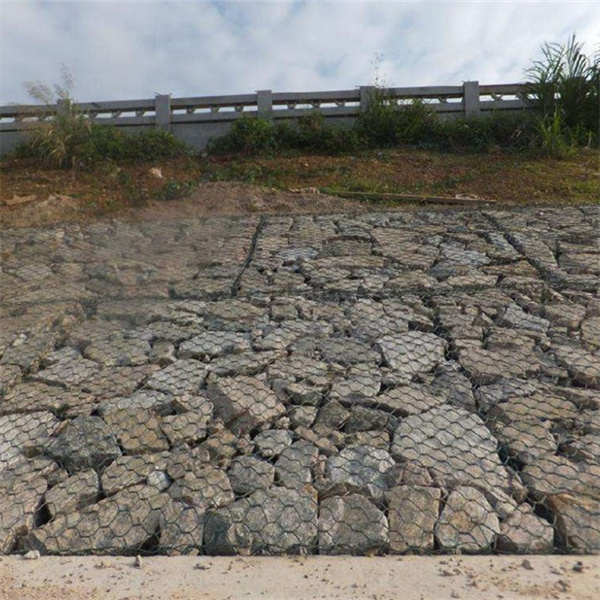ഒക്ട് . 11, 2024 20:10 Back to list
Detailed Design for Gabion Seat Wall Construction and Installation
The Versatility and Design of Gabion Seat Wall Details
Gabion structures have emerged as an innovative solution for a variety of landscaping and architectural needs. Among these, gabion seat walls are particularly noteworthy. Their combination of functionality, aesthetic appeal, and eco-friendliness makes them a popular choice in contemporary design. This article delves into the details of gabion seat walls, their construction, and their application in various settings.
Understanding Gabion Structures
At its core, a gabion is a cage or container made from wire mesh that is filled with rocks, concrete, or sometimes soil. Originally used for erosion control, gabions have evolved into multifunctional structures. Their robust and permeable nature allows for excellent drainage, making them ideal for a range of environments, from urban landscapes to rural settings.
Gabion Seat Walls Function and Design
Gabion seat walls serve a dual purpose they provide seating while also acting as a sturdy retaining wall. This dual functionality makes them particularly valuable in public parks, gardens, and commercial spaces. The typical height of a gabion seat wall is around 18 to 24 inches, which is comfortable for sitting while also providing adequate support for the surrounding landscape.
The design of gabion seat walls can vary widely based on project requirements and aesthetic preferences. Some may feature a straight, uniform design, while others may incorporate curves and angles, allowing for a more organic feel. The materials used for filling the gabions also greatly influence the visual appeal. Common choices include natural stones, recycled materials, or even colorful glass, enabling designers to create unique and eye-catching installations.
Construction Details
Creating gabion seat walls involves several essential steps. First, the design must be carefully planned, considering factors such as site conditions, intended use, and design aesthetics. The construction process typically begins with site preparation, which may involve leveling the ground and establishing a foundation.
Once the site is ready, the wire mesh cages are assembled and placed according to the design. The filling material is then added to the cages, layer by layer, ensuring a stable and even distribution. It’s crucial to use appropriate quality mesh wire to ensure durability and maintain the integrity of the wall. After filling, the top of the gabion can be capped with a flat stone or similar material, providing a smooth surface for seating.
gabion seat wall detail factories

Advantages of Gabion Seat Walls
Gabion seat walls boast numerous benefits that make them an attractive choice in both commercial and residential landscaping. Here are a few key advantages
1. Durability Gabions are built to last. The wire mesh and rocks can withstand harsh weather conditions, making them ideal for outdoor applications.
2. Eco-friendliness With the potential for using recycled materials as fill, gabion seat walls promote sustainability and reduce waste.
3. Aesthetic Versatility As mentioned earlier, the variety of filling materials allows for creativity in design, enabling gabions to blend seamlessly into any environment.
4. Cost-Effectiveness Compared to traditional seating solutions, gabion seat walls can be more economical, especially when using locally sourced materials.
5. Low Maintenance Once constructed, gabion seat walls require minimal maintenance, freeing up time for other landscaping tasks.
Conclusion
In conclusion, gabion seat walls provide an exceptional blend of functionality, design, and environmental benefits. Their versatility allows them to fit into various design schemes, making them suitable for both public and private spaces. With proper planning and construction, these structures can enhance any landscape, offering seating solutions that are as durable as they are visually appealing. As more designers and architects prioritize sustainability and aesthetics in their projects, the popularity of gabion seat walls is likely to grow, leading to more innovative uses and designs in the future. Whether in a bustling urban park or a serene backyard, gabion seat walls exemplify thoughtful landscaping that harmonizes with nature.
-
Visualizing Gabion 3D Integration in Urban Landscapes with Rendering
NewsJul.23,2025
-
The Design and Sustainability of Gabion Wire Mesh Panels
NewsJul.23,2025
-
The Acoustic Performance of Gabion Sound Barriers in Urban Environments
NewsJul.23,2025
-
Mastering the Installation of Galvanized Gabion Structures
NewsJul.23,2025
-
Gabion Boxes: Pioneering Sustainable Infrastructure Across the Globe
NewsJul.23,2025
-
Custom PVC Coated Gabion Boxes for Aesthetic Excellence
NewsJul.23,2025
-
Installation Tips for Gabion Wire Baskets in Erosion Control Projects
NewsJul.21,2025






